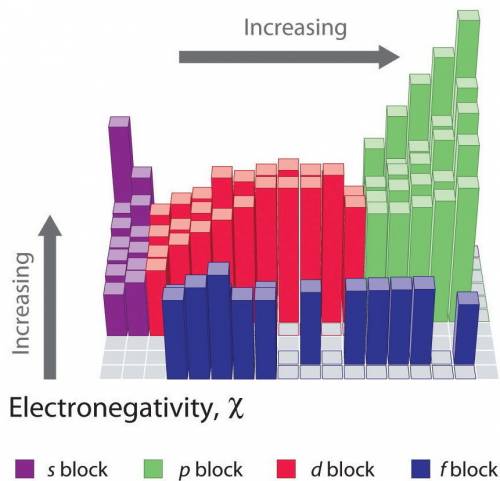
Chemistry, 05.07.2019 19:30 arrissa1234hinkle
Achemist wants to use an element with a large electronegativity for an experiment. based on trends in the periodic table, which of the following groups has the largest electronegativity. alkali metals halogens noble gases alkaline earth metals

Answers: 1


Another question on Chemistry


Chemistry, 22.06.2019 10:30
Skills of homo sapiens were found an excavation. the skulls were preserved because the bodies were frozen. so, these fossils are (blank) fossils.the image shows the evolution of skulls beginning 2 to 3 million years ago. based on the image, modern human skulls(blank) ape skulls.
Answers: 1

Chemistry, 23.06.2019 13:00
Me puede ayudar con estas preguntas 1. diga que estudia la química orgánica explica el nacimiento bioquímicas 2. cual es la importancia de la química orgánica. 3. determine las principales características del hidrógeno, oxigeno, nitrógeno y azufre como elementos que constituyen los compuestos orgánicas. 4. elabore una tabla comparativa entre compuestas orgánicas e incaicos.
Answers: 1

Chemistry, 23.06.2019 18:30
3. consider a process in which a gas with the properties of air expands at constant pressure as described by the cups of air discussion in class. one kilogram of air starts out at 1 atm and 290 k. the air expands its volume by absorbing a sufficient amount of thermal energy to increase the temperature at constant pressure to 350 k. a. on a p-v diagram, sketch this process with point a as the starting point and point b as the ending point. b. if the process is completely reversible, calculate the thermal energy added from an external source. c. calculate the entropy change for this process assuming it is reversible. d. calculate the work delivered externally if this is a reversible process. e. if the process is completely irreversible, calculate the amount of entropy change for the process that is due to irreversibilities. f. if the process is completely irreversible, calculate the amount of thermal energy added from an external source and compare this result to the thermal energy calculated in part b. g. for the completely irreversible process, calculate the entropy change due to this thermal energy addition. h. for the completely irreversible process, calculate the total entropy change and compare it to the entropy change in part c.
Answers: 1
You know the right answer?
Achemist wants to use an element with a large electronegativity for an experiment. based on trends i...
Questions


Mathematics, 07.05.2020 00:12

Biology, 07.05.2020 00:12


Mathematics, 07.05.2020 00:12





Social Studies, 07.05.2020 00:12


History, 07.05.2020 00:12



Mathematics, 07.05.2020 00:12


Mathematics, 07.05.2020 00:12






